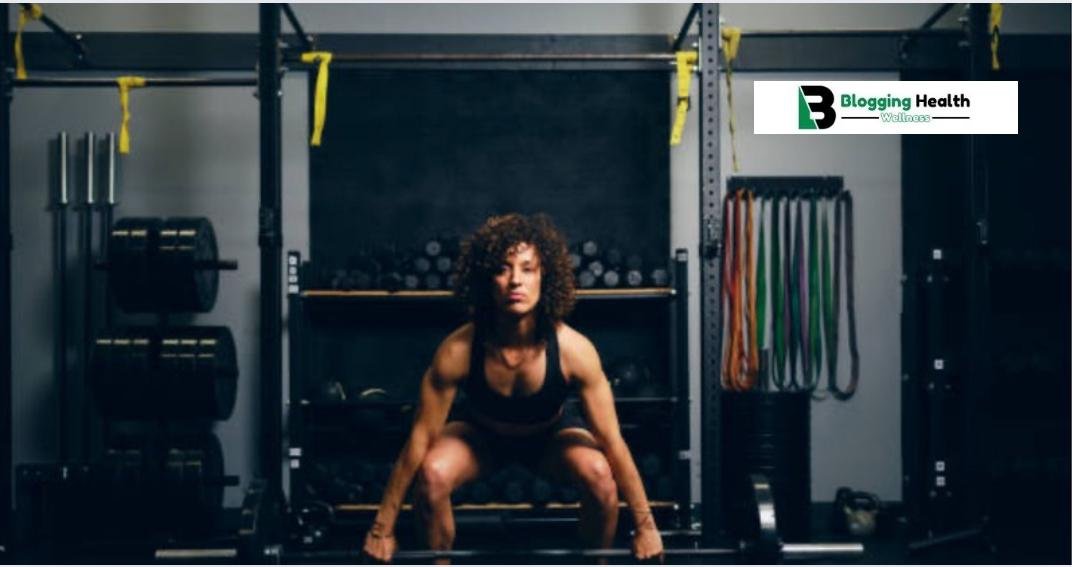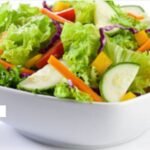Intro Standing Barbell Curl Muscles Worked
The Standing Barbell Curl Muscles Worked is such an old-fashioned exercise and yet is very useful in the strength sport, bodybuilding, and other modification of it. Very simple and practical in nature, this exercise emphasizes the upper arm – the biceps, but it also recruits a number of other muscles from other muscle groups. Whether you are a novice that wants to acquire basic muscle mass or an advanced lifter who wishes to sculpt the arms, comprehension of the muscles worked during the standing barbell curl is optional to ease the progression of payload.
Overview of the Standing Barbell Curl
The Standing Barbell Curl Muscles Worked is an advanced compound exercise performed with a barbell to enhance the strength of the biceps brachii or the two major muscles which form the front side of the upper arm. It is a lifting activity through flexing the elbow in an arc carrying a barbell thus utilising more than 2 muscles.
Movement characteristics of lifters are limited in other variations like seated or preacher curl and that is why they enable lifters to lift much heavier weights when performing the standing barbell curl. This however also requires very strict discipline in muscle engagement to avoid cheating.

Primary Mover Muscles During the Standing Barbell Curl
While the standing barbell curl indeed focuses on the biceps, it involves other muscles as synergists and stabilizers as well.
Primary Muscles:
- Biceps Brachii:
- The biceps brachii, commonly known as the biceps, is the primary muscle worked during the standing barbell curl. It consists of two heads: the short head (inner bicep) and the long head (outer bicep). These heads work together to flex the elbow and supinate the forearm, which is the rotational movement that occurs when your palms turn upward.
- Functionally, the biceps are responsible for bringing the forearm closer to the upper arm, which is the primary action during a curl. The standing barbell curl effectively targets both heads, contributing to increased muscle size and strength.
- Brachialis:
- Located beneath the biceps, the brachialis plays a crucial role in elbow flexion. Though it doesn’t contribute as much to the overall appearance of the upper arm as the biceps, it is one of the strongest elbow flexors and contributes significantly to arm thickness.
- The brachialis is activated during the curl, especially when the biceps reach their maximum contraction. This muscle helps push the biceps up, making them appear larger when developed.
- Brachioradialis:
- This muscle runs along the forearm and assists in flexing the elbow, especially when the palms face inward (neutral grip) or downward (pronated grip). Although it is not the main target in a traditional barbell curl, it is still activated as a secondary muscle.
- The brachioradialis is especially engaged when the grip is shifted, such as in reverse curls, but it still plays a supporting role in the standard standing barbell curl.
Secondary Muscles:
- Forearm Flexors:
- The forearm muscles, particularly the flexors, play a secondary role in the standing barbell curl. These muscles help stabilize the wrist and grip the barbell, providing support during the curl movement.
- Strengthening these muscles is important, as a strong grip can translate into better performance in other upper body exercises.
- Deltoids (Anterior Head):
- The front part of the shoulder muscles, known as the anterior deltoids, can be engaged to a small extent, particularly if form breaks down and momentum is used during the lift. While not the primary target, maintaining proper shoulder positioning is crucial to prevent injury.
Stabilizing Muscles:
- Core Muscles (Rectus Abdominis, Obliques, and Transverse Abdominis):
- The standing position requires core stability to maintain proper posture throughout the exercise. The core muscles work isometrically to keep the body upright and prevent excessive swaying or arching of the back.
- A strong core not only improves the efficiency of the exercise but also reduces the risk of lower back strain.
- Erector Spinae:
- These muscles run along the spine and help maintain an upright posture during the curl. They work to prevent the torso from leaning back, especially when lifting heavier weights.
- Leg Muscles (Quadriceps, Hamstrings, and Glutes):
- While not directly involved in the curling motion, the legs play a stabilizing role, providing a solid base. Slight engagement of the quads, hamstrings, and glutes can help maintain balance and support the movement.
Benefits of the Standing Barbell Curl
The standing barbell curl offers numerous benefits beyond muscle hypertrophy and strength gains:
- Improved Arm Definition: Regularly performing barbell curls helps in sculpting well-defined arms, enhancing the overall aesthetics of the upper body.
- Increased Muscle Mass: The exercise is effective in promoting hypertrophy, especially when performed with progressive overload.
- Functional Strength: Strengthening the biceps, forearms, and stabilizing muscles can improve your performance in daily activities that involve pulling, lifting, or carrying.
- Enhanced Grip Strength: By engaging the forearm muscles, barbell curls contribute to improved grip strength, which is beneficial in other lifts and sports.

Proper Form and Technique
Maintaining proper form is crucial for maximizing the effectiveness of the standing barbell curl and minimizing the risk of injury. Here’s a step-by-step guide to executing the exercise correctly:
- Starting Position:
- Stand upright with your feet shoulder-width apart.
- Hold a barbell with an underhand (supinated) grip, hands slightly wider than shoulder-width.
- Keep your elbows close to your torso and your arms fully extended.
- Execution:
- Inhale, brace your core, and curl the barbell upward by flexing your elbows. Focus on moving only your forearms.
- Keep your upper arms stationary and avoid swinging or using momentum.
- Lift until the barbell reaches shoulder level or slightly below. At the top, squeeze your biceps.
- Lowering the Bar:
- Exhale as you slowly lower the barbell back to the starting position, fully extending your arms without locking your elbows.
- Control the movement on the way down to maximize muscle engagement and avoid injury.
- Common Mistakes:
- Swinging the Torso: Using body momentum to lift the weight reduces the effectiveness of the exercise and can lead to lower back strain.
- Elbow Flaring: Allowing the elbows to move away from the torso diminishes biceps engagement and can strain the shoulder joints.
- Partial Range of Motion: Not fully extending or contracting your arms can limit muscle activation and reduce the overall benefits.
Variations of the Standing Barbell Curl
Adding variations to your standing barbell curl routine can help target different muscle fibers and keep your workouts engaging. Here are some popular alternatives:
- Wide-Grip Barbell Curl:
- This variation targets the short head of the biceps more intensely by increasing the distance between the hands.
- It emphasizes the inner part of the biceps, contributing to a fuller, more rounded appearance.
- Narrow-Grip Barbell Curl:
- A narrower grip emphasizes the long head of the biceps, which can help enhance the peak of the bicep when flexed.
- This grip also slightly increases forearm engagement.
- Reverse Barbell Curl:
- By flipping your grip to a pronated (overhand) position, this variation shifts the emphasis to the brachialis and brachioradialis muscles.
- It’s an excellent option for overall arm strength and forearm development.
- Cheat Curl:
- Advanced lifters sometimes use this variation to handle heavier weights, intentionally using a slight body swing to lift the barbell.
- This variation should be used sparingly and with caution, as improper form can lead to injury.
- Incline Barbell Curl:
- Performing curls on an incline bench alters the angle of the exercise, providing a greater stretch on the biceps.
- This variation is excellent for maximizing the range of motion and targeting different parts of the muscle.

Tips for Maximizing Your Standing Barbell Curl
- Focus on Mind-Muscle Connection: Concentrate on feeling the biceps contract during each rep. This connection can improve muscle activation and growth.
- Progressive Overload: Gradually increase the weight, reps, or sets over time to continue challenging your muscles and promoting growth.
- Control the Eccentric Phase: Slowing down the lowering phase of the curl can increase muscle tension and lead to greater gains.
- Use a Weight You Can Control: Lifting too heavy can compromise form, leading to reduced muscle activation and increased injury risk. Choose a weight that allows you to perform the exercise with proper technique.
- Include a Variety of Grips: Switching between wide, narrow, and reverse grips can help target different muscle fibers and prevent plateaus.
Conclusion
The Standing Barbell Curl Muscles Worked is a fundamental exercise that effectively targets the biceps and other supporting muscles. By understanding the muscles worked and employing proper form and variations, you can maximize the benefits of this exercise. Incorporating this curl into your routine can lead to significant improvements in arm strength, size, and overall upper body aesthetics. Remember, consistency, good technique, and gradual progression are key to achieving your fitness goals with the standing barbell curl.
FAQs
1. What is the main muscle worked in the standing barbell curl?
The main muscle worked is the biceps brachii, which is responsible for flexing the elbow and rotating the forearm.
2. Are standing barbell curls good for building biceps?
Yes, standing barbell curls are one of the best exercises for isolating and building the biceps, promoting muscle growth and strength.
3. Do barbell curls work the forearms?
Yes, barbell curls work the forearm muscles, especially the brachioradialis and forearm flexors, which assist in gripping the bar.
4. Can barbell curls improve grip strength?
Yes, because they require you to hold and stabilize the bar, barbell curls can help improve your grip strength over time.
5. How can I maximize bicep activation during barbell curls?
To maximize bicep activation, focus on using a full range of motion, keep your elbows close to your sides, and avoid swinging or using momentum.
6. Are standing barbell curls better than seated curls?
Standing curls engage more stabilizing muscles, including the core, making them a more functional, compound movement compared to seated curls, which isolate the biceps more.
7. What common mistakes should I avoid when doing barbell curls?
Avoid using excessive weight, swinging your body, or flaring your elbows. These mistakes can reduce the effectiveness of the exercise and increase the risk of injury.
8. How many sets and reps are recommended for barbell curls?
Typically, 3-4 sets of 8-12 reps are recommended for muscle growth. Adjust the weight and reps according to your fitness goals and experience level.


